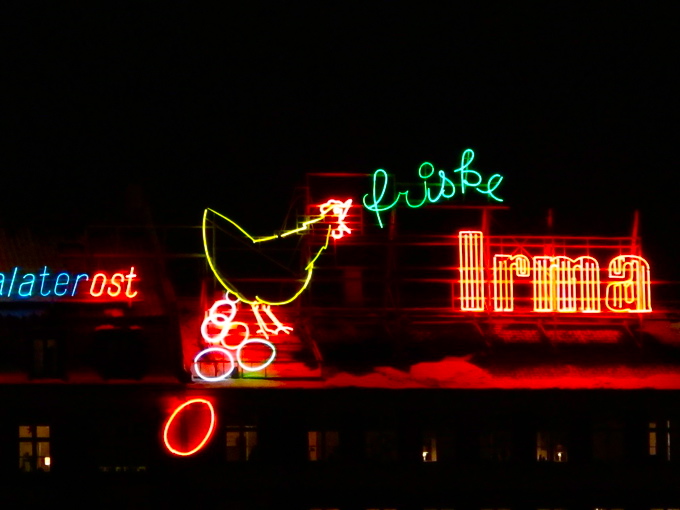Note: Thomas E. Kennedy was WINNER of the Expatriate Writing Award in 2002, his citation saying, “Kennedy has done for Copenhagen what Joyce did for Dublin.” Kennedy is also a two-time WINNER of the Eric Hoffer Award.
“How can I explain [my nightly wanderings to my] kids? I am a man still. I am alone and I have not quite found my way yet. Play it cool. Invite them in for a beer. Talk. Yet it would break my heart for them to see that this life is not the life I raised them to. There was supposed to be a family unit here…stability…What would they think of their old man out on the town looking in all the wrong places for company, for solace..?”
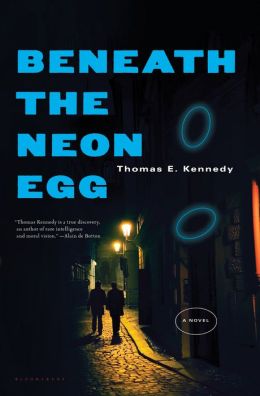 In this final book of his Copenhagen Quartet, author Thomas E. Kennedy creates yet another vibrant portrait of life in Copenhagen, the city which has been his own home for the past thirty years. Each of the four novels in the quartet focuses on a different aspect of the city’s life as Kennedy has observed it there as an American expatriate. Each is written in a different literary style, and each is set during a different season, with different characters. In the Company of Angels, set in spring, features a sensitively drawn main character, a torture victim from Chile, now living in a refuge in Copenhagen. This remarkable facility specializes in helping torture victims begin to live again by experiencing warmth and understanding, and even, perhaps, love, within an environment in which nature, music, and dance are also integral parts of life.
In this final book of his Copenhagen Quartet, author Thomas E. Kennedy creates yet another vibrant portrait of life in Copenhagen, the city which has been his own home for the past thirty years. Each of the four novels in the quartet focuses on a different aspect of the city’s life as Kennedy has observed it there as an American expatriate. Each is written in a different literary style, and each is set during a different season, with different characters. In the Company of Angels, set in spring, features a sensitively drawn main character, a torture victim from Chile, now living in a refuge in Copenhagen. This remarkable facility specializes in helping torture victims begin to live again by experiencing warmth and understanding, and even, perhaps, love, within an environment in which nature, music, and dance are also integral parts of life.
Falling Sideways, set in autumn, is totally different in style, a satire of the business world featuring one small company in which the characters’ business goals so dominate their person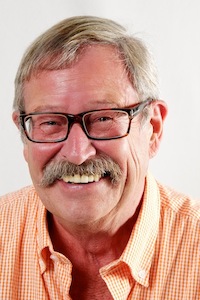 al lives that they fail to grow and end up leading emotionally stunted lives. Kerrigan in Copenhagen, set in summer, different still, becomes a guide book, with a peripheral love story, in which main character Kerrigan’s task is to select the one hundred best, most historic, and most congenial bars and cafes in Copenhagen from over fifteen hundred candidates. As he travels throughout the city enjoying its bar life and its memorials to artists and writers, Kerrigan, with a PhD in literature, also reminisces about James Joyce, Peter Hoeg, and one of his favorites, Dan Turrell, among other authors.
al lives that they fail to grow and end up leading emotionally stunted lives. Kerrigan in Copenhagen, set in summer, different still, becomes a guide book, with a peripheral love story, in which main character Kerrigan’s task is to select the one hundred best, most historic, and most congenial bars and cafes in Copenhagen from over fifteen hundred candidates. As he travels throughout the city enjoying its bar life and its memorials to artists and writers, Kerrigan, with a PhD in literature, also reminisces about James Joyce, Peter Hoeg, and one of his favorites, Dan Turrell, among other authors.
What unites the characters in these three novels is that all are acutely aware of the role of art, music, and beauty in bringing peace to their damaged souls as they explore the themes of love and death, freedom and confinement, commitment and betrayal, and the worldly and the spiritual within their Danish environment.
This final novel, Beneath the Neon Egg, set in winter, also explores these themes, but it does so within a still different genre, as Kennedy writes a noir novel of a lost man who haunts jazz clubs and bars, looking for happiness in alcohol and experimental sex. Employed, ironically, as a translator, Patrick Bluett, a forty-three-year-old transplant to Copenhagen, can work when he wants, the only requirement of his job being that he produce five translated pages a day, leaving him ample time to “follow desire, abandon his work, [and] escape to the wild.” A man who feels betrayed in his marriage but who still wants to be part of his children’s lives, Bluett does not have a clue about what it takes to be a grown-up as he looks for quick and easy fixes for his malaise. Throughout the novel, he plays John Coltrane’s music, with “A Love Supreme” being a favorite (see video at end of review), because it “swells his heart with acknowledgement of his existence,” and author Kennedy uses the structure of this four-part suite for his chapter divisions within the novel.
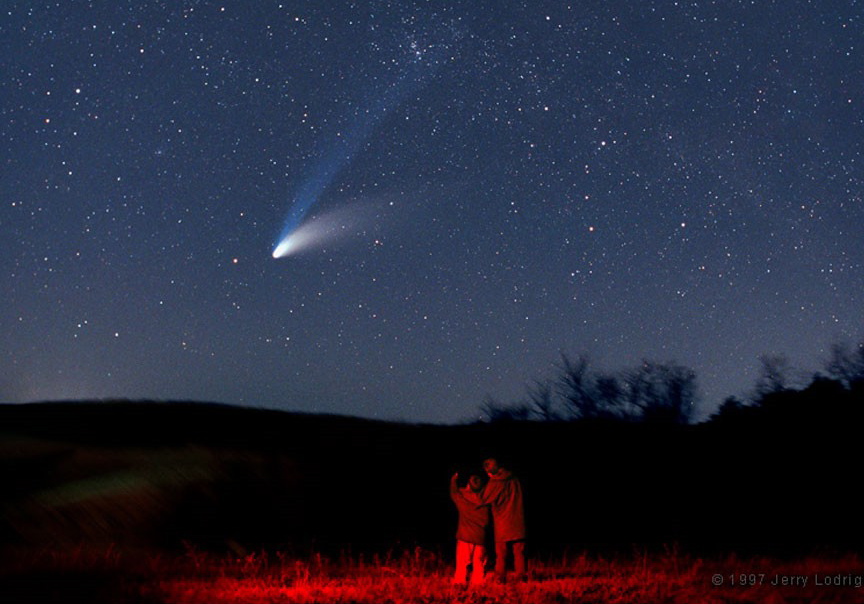
Hale-Bopp comet, 1997, Jerry Lodriguss, photographer. Bluett realizes, when he sees this, that “Maybe there is something. Cause without something, there’s nothing.”
Living in a small apartment overlooking Black Dam Lake, with the iconic sign of a neon chicken “laying neon eggs that glimmer in the black ice,” Bluett often walks the city at night, much as Joyce did in Ulysses, occasionally dropping into bars of dubious character, where after being aggressively propositioned by both men and women, he ultimately concludes that “the world has changed in the twenty years since he was alone.” His only friend, his neighbor Sam Finglas, sometimes available to share confidences, is also divorced and alone, but when Sam eventually finds a woman to share his life, Bluett is out in the cold, working the bars alone in search of companionship. Gradually, his past unfurls, and in his loneliness, he wonders, “Do I like existing? Would I prefer not to? [I] cannot deny I am as confused as when I was a teenager. More confused. Because then I believed in romantic love.” As he reminisces about past sexual experiences, some of them sordid, his language, raw, earthy, and often vulgar, conveys his frustrations with his life, but he is also sensitive, occasionally, to the feelings of women he has met and used, and he sometimes feels shame and sorrow for his preoccupation with the (graphically described) mechanics of sex and his inability to relate more fully on an emotional level.
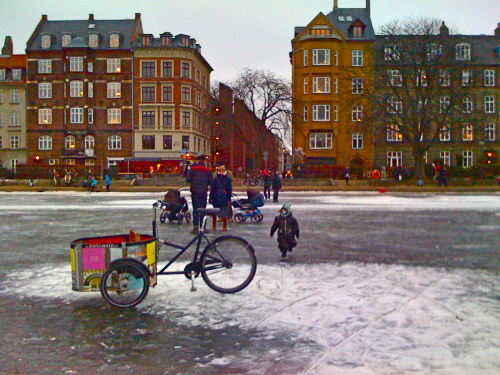
Bluett looks out on the frozen lakes from his apartment, once the area where sailors lived, and now the residence of the bourgeoise.
He continues to haunt jazz clubs and wander around some of Copenhagen’s seediest areas, returning home to his collection of masks (obviously symbolic). He rationalizes about his life and the lack of success in his marriage, asking “What is connection, really, but another form of illusion?” Then he asks, almost plaintively, “But isn’t true intimacy possible? A meeting of two people’s deepest natures?” He is not sure of the answers, and he is not making much progress in figuring them out from within his alcoholic haze and his history of self-indulgence. It is not until he faces the biggest crisis of his post-divorce life, a crisis involving his friend Sam, that he begins to ask himself the big questions, and when Sam’s son comes knocking on his door, he must finally address some of the biggest themes of the whole quartet – and of life: What does it mean to love? How much do we owe those we love, if anything? Does one choose one’s life or do we simply react to what happens to us? How much freedom does one have from his own past and how much control over the future? What, if anything, comes after life?

The gate to Christiania, a place Bluett visits, opens to a counterculture commune, heavily involved with drugs, which has existed since 1971 when it was created inside an a abandoned military base. The back of the sign reads, “Welcome to the EU.”
The answers to these and other questions bring this novel to a close and the Copenhagen Quartet to its final resolutions in terms of themes and images. Full, rich, and so resonant with lively details about people and places that I feel as if I could walk around Copenhagen and know it almost as well as I know my own city, Thomas E. Kennedy’s quartet is a triumph, an homage to a city by an author who has explored and obviously loved it for thirty years.
Also by Thomas E. Kennedy: IN THE COMPANY OF ANGELS, FALLING SIDEWAYS, KERRIGAN IN COPENHAGEN
Photos, in order: The author’s photo appears on http://www.betsywritersroom.com
The “neon chicken,” visible from Bluett’s apartment, is an ad for Irma’s Supermarket: http://classiccopenhagen.blogspot.com
The Hale-Bopp comet, which appeared in 1997, was the first time it had been seen from earth in almost 4200 years, and would not be seen again fro 2400 years. This made a major impression on Bluett, when he saw it. Photo by Jerry Lodgriguss, who has many more photos here: http://www.astropix.com/INDEX.HTM This photo by Lodriguss was found on http://apod.nasa.gov
The box bike and frozen lake are sights that Bluett saw from his small apartment for most of the winter: http://onourowntwowheels.com/
The Christiania gate, with “Welcome to the EU” on the back, was noted by Bluett on his trips there. The area is now regarded as a haven for drugs, built as an independent commune in 1971.
ARC: Bloomsbury
